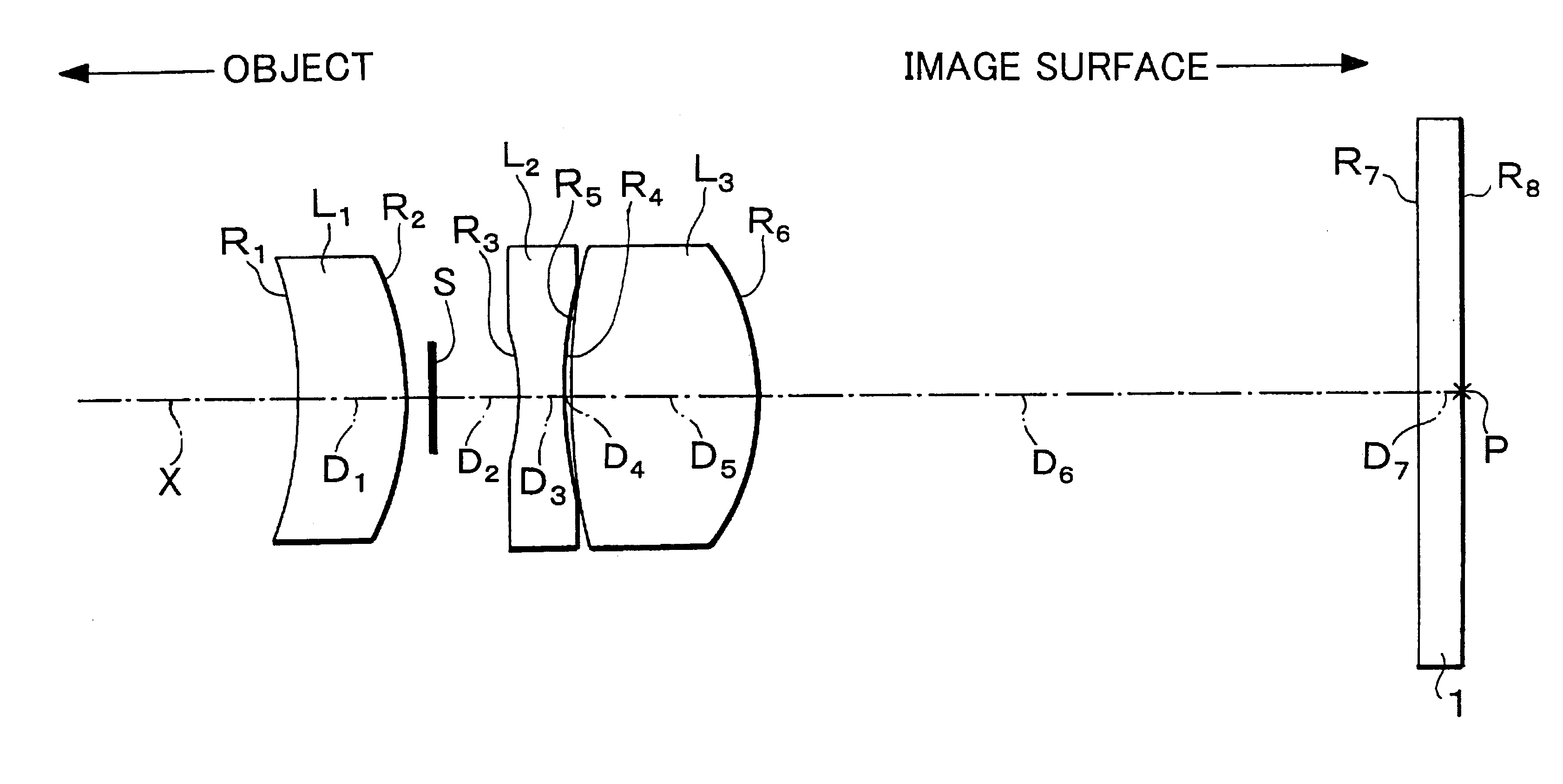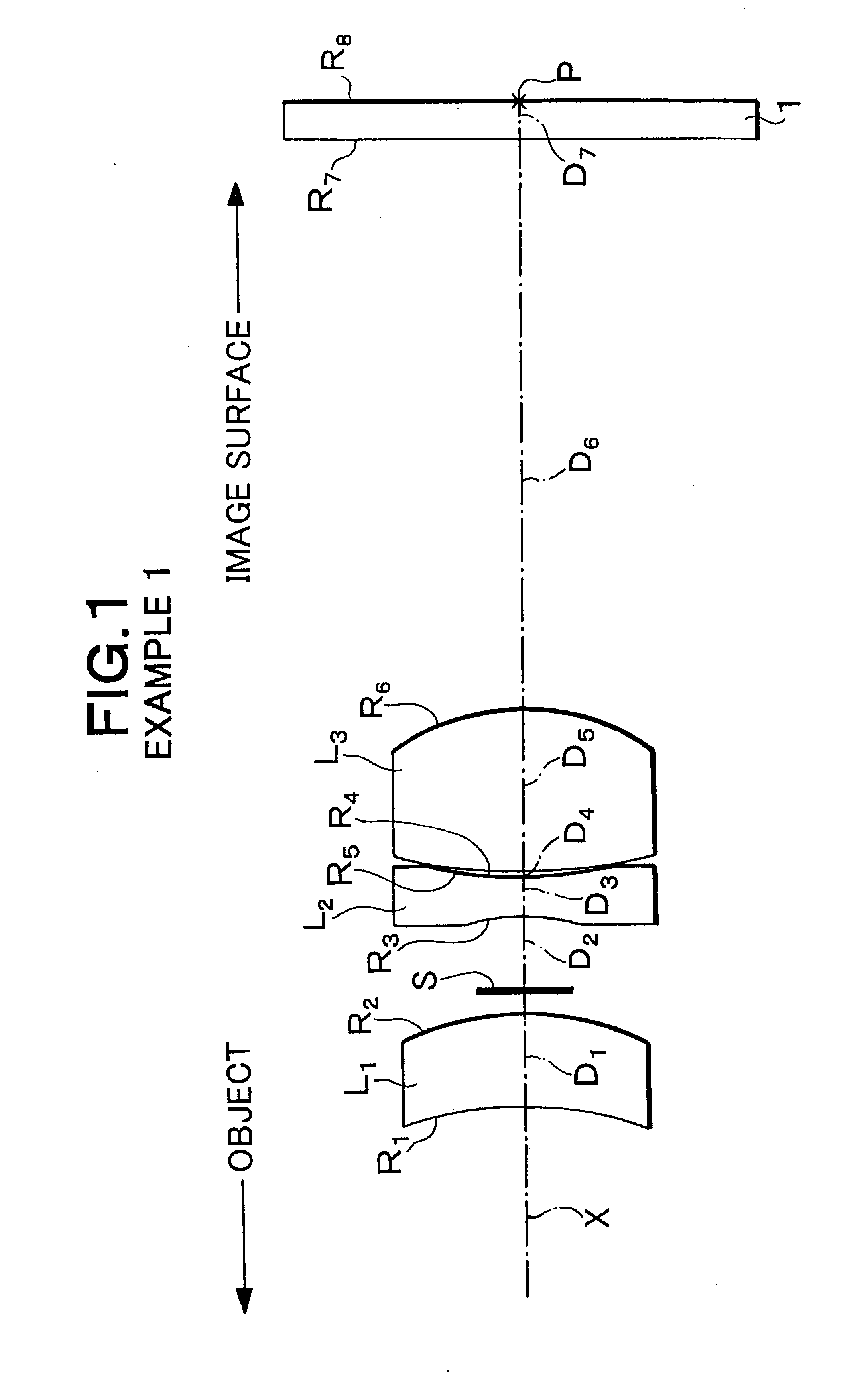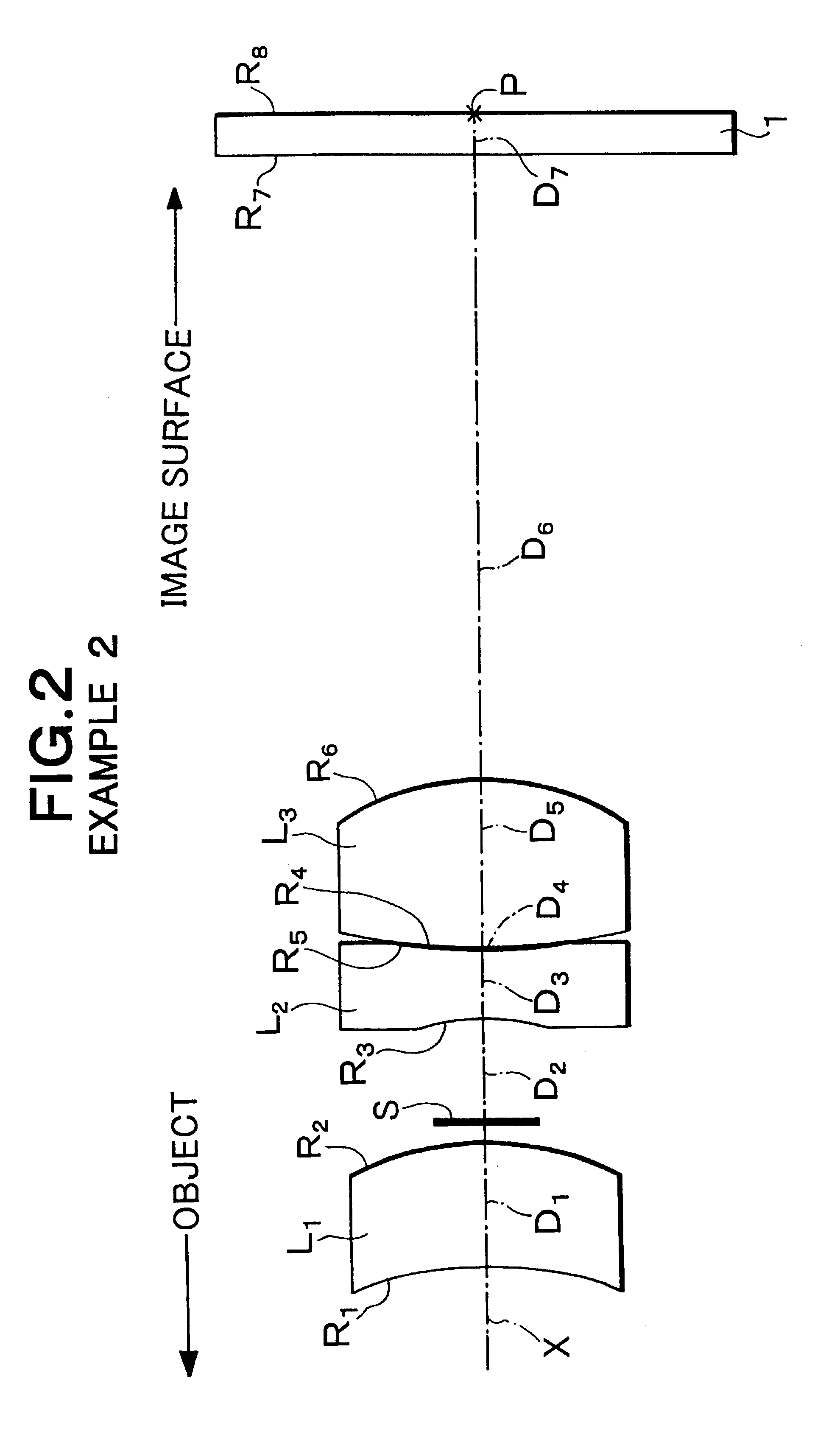Single-focus lens
a single-focus lens and lens technology, applied in the field of single-focus lenses, can solve the problems of difficult to correct the curvature of field, and difficult to correct the coma and curvature of field,
- Summary
- Abstract
- Description
- Claims
- Application Information
AI Technical Summary
Benefits of technology
Problems solved by technology
Method used
Image
Examples
example 1
FIG. 1 shows the configuration of the single-focus lens in accordance with Example 1. This single-focus lens is configured as explained in the above-mentioned embodiment. Specifically, the single-focus lens comprises, successively from the object side, a first lens L.sub.1 made of a meniscus lens with a positive refracting power having aspheric surfaces on both sides with a convex surface directed onto the image surface side, a stop S, a second lens L.sub.2 made of a biconcave lens having a surface with a greater curvature directed onto the object side, and a third lens L.sub.3 made of a biconvex lens having an aspheric surface on the image surface side with a surface having a greater curvature directed onto the image surface side.
The upper part of the following Table 1 shows the focal length f', Fno., and angle of view 2.omega. of this single-focus lens. The middle part of Table 1 shows the radius of curvature R of each lens surface, the center thickness of each lens and the air sp...
example 2
FIG. 2 shows the configuration of the single-focus lens in accordance with Example 2. This single-focus lens has a configuration substantially the same as that of Example 1. The upper part of the following Table 2 shows the focal length f', Fno., and angle of view 2.omega. of this single-focus lens. The middle part of Table 2 shows the radius of curvature R of each lens surface, the axial surface space D of each lens, and the refractive index N and Abbe number .nu. of each lens at d-line. The radius of curvature R and axial surface space D are standardized with respect to the focal length 1.00 (mm) of the whole lens system. Here, the surface number successively increases from the object side, whereas the surfaces indicated by "*" on the left side of their surface numbers refer to aspheric surfaces. The lower part of Table 2 shows the values of constants K, A.sub.4, A.sub.6, A.sub.8, and A.sub.10 of each aspheric surface shown in the above-mentioned aspheric surface expression. Also,...
PUM
 Login to View More
Login to View More Abstract
Description
Claims
Application Information
 Login to View More
Login to View More - R&D
- Intellectual Property
- Life Sciences
- Materials
- Tech Scout
- Unparalleled Data Quality
- Higher Quality Content
- 60% Fewer Hallucinations
Browse by: Latest US Patents, China's latest patents, Technical Efficacy Thesaurus, Application Domain, Technology Topic, Popular Technical Reports.
© 2025 PatSnap. All rights reserved.Legal|Privacy policy|Modern Slavery Act Transparency Statement|Sitemap|About US| Contact US: help@patsnap.com



